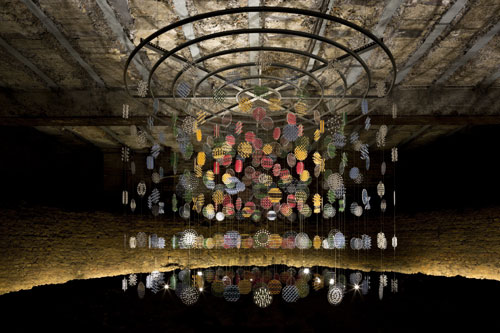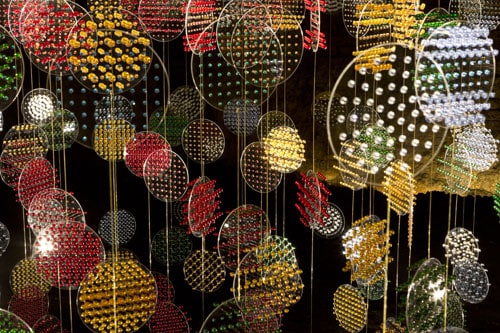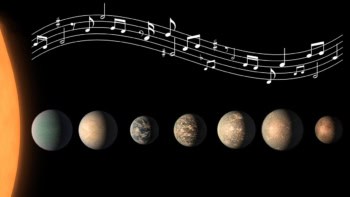By James Dacey

“The finished work is everything I had hoped for and more – it takes my breath away!”
That was the reaction of artist Lyndall Phelps upon seeing her physics-inspired installation in London, which will open to the public this Saturday. Entitled Covariance, the work was inspired by the SuperKamiokande neutrino observatory in Japan – reflecting the machinery of particle detectors and the way in which particle physicists visualize their data. The kaleidoscopic artwork is housed in a Victorian ice well beneath the London Canal Museum, in reference to the subterranean location of many large particle-physics experiments.
Phelps is an artist who often creates works inspired by science, where she looks in particular for the personal and emotive themes that can exist within academia. For this latest project, she worked in collaboration with Ben Still, a particle physicist from Queen Mary, University of London. The pair was commissioned to work on the project by the Institute of Physics (IOP) as the first in a programme of artists-in-residence called Superposition.
Phelps says she was inspired by an article that Still had written about the work being undertaken at SuperKamiokande, part of the neutrino-oscillation experiment called T2K. The installation is designed to reflect the intricate details and the vast amounts of work that go into the construction of such a particle detector. The artwork comprises hundreds of hand-crafted acrylic discs, each patterned with glass beads and diamantés, connected together with brass rods. Strings of these discs have been suspended from the ceiling of the ice well in concentric circles with an outer diameter of about nine metres.
“The micro industrial-scale process Lyndall and her team of assistants are employing to create Covariance mimics that of my colleagues and me when constructing the ND280 near detector for the T2K experiment,” wrote Ben Still in the blog that he and Phelps created to document the project from the beginning. “Thousands of individual elements are painstakingly assembled by hand, overseen by an expert. Jigs and standardized methods ensure accuracy in the alignment of each piece.”

The coloured beads and diamantés were also used as a reference to the dot diagrams used by researchers when they interpret data collected by detectors. According to Lyndall, she also chose these materials to pay respect to the large numbers of female “computers” who were employed in the early years of particle physics to carry out repetitive tasks in the collection of data. “I was keen for the production of the work to encompass this work ethic and to use materials that reflected women’s craft, hence the use of glass beads and diamantés,” writes Phelps.
The name Covariance comes from the mathematical term relating to the degree to which a change in any number of unrelated things is unified by the changes in the environment that surrounds them. Still explains the choice: “Covariance is an apt name for the installation for many reasons. First, it reflects the journey Lyndall and I continue to take together, learning from each other and discovering new ideas.”
Superposition opens at the London Canal Museum on 24 August and will run until 20 October.



